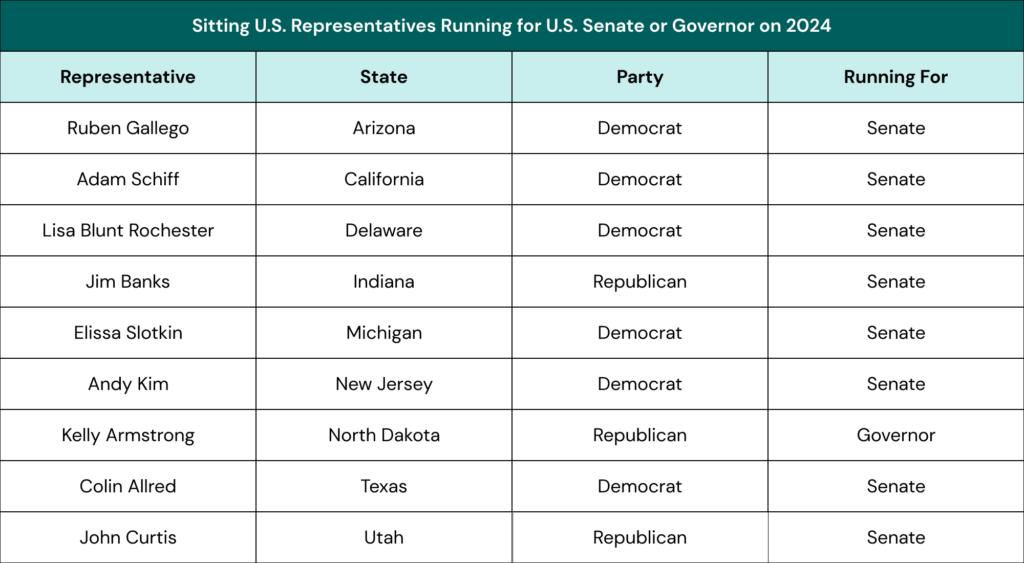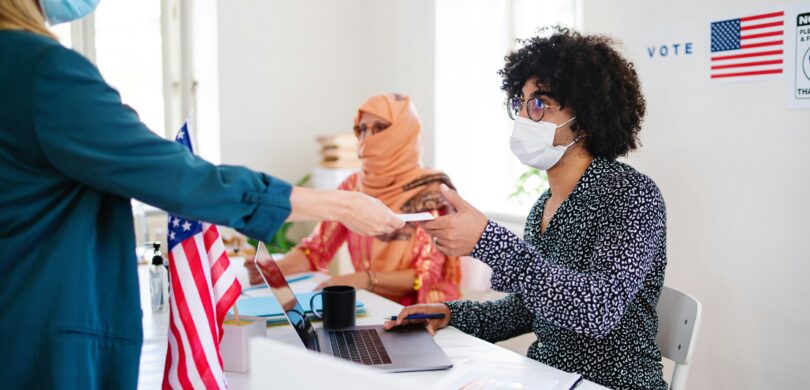How will the outcome of the 2024 elections impact different legislative offices across the United States? Read our analysis today.
There’s less than 70 days until Election Day. Both major political parties have now formally finalized their nominees for President and Vice President and the vast majority of Congressional and Gubernatorial races are set. Most of the focus will be on which party will control the White House and both chambers of Congress in January 2025. Understandably, there’s less attention paid to the vacancies those elections might create and what that could mean for public policy.
Some candidates for higher office resign any existing positions they hold. But many remain in office while running their campaign and stay in that office if they fail to win their new seat. In this blog, we take a look at some of these lesser-considered potential consequences of the upcoming 2024 elections this November.
IF The Harris-Walz Ticket Wins: Multiple Shifts in Minnesota
If Kamala Harris is elected, she will become just the second sitting Vice President to be elected President since the mid-19th century, joining President George H.W. Bush. While this ascent is somewhat rare, it is also fairly drama-free — her vacated office of the Vice Presidency would be filled by her running mate.
In this scenario, Governor Tim Walz vacating the Minnesota Governorship would have larger ripple effects. The Minnesota constitution rules that the lieutenant governor, currently Peggy Flanagan, would assume the governorship for the remainder of the term. Flanagan would become the state’s first female governor and the country’s first female Native American governor.
Here is where the succession gets particularly tricky — Flanagan’s seat would then need to be filled. The constitution would assign that office to the presiding officer of the Senate, currently Bobby Joe Champion. Champion would also make history as the state’s first Black lieutenant governor. His Senate seat would then be vacant until a special election was held. This vacancy could lead to gridlock in the 67-seat Senate if Democrats retain the only seat up for special election — District 45 — this fall. Otherwise, Republicans would regain control of the chamber, at least temporarily, should they win the District 45 race. With a new Governor and a need to elect a new Senate President, January could be an interesting month in St. Paul under this scenario.
IF The Trump-Vance Ticket Wins: Ohio Selects Another Senator
If the Republican ticket prevails, President Trump will become the second President to serve non-consecutive presidential terms, after Grover Cleveland. The only vacancy directly created by the election of the Trump-Vance ticket would be J.D. Vance’s Senate seat, which he won in 2022. If that seat becomes open, it would happen just as voters in Ohio elect their other U.S. Senator. That race is currently underway between incumbent Sherrod Brown and businessman Bernie Moreno.
Ohio’s constitution would allow its sitting Governor, Republican Mike DeWine, to select Vance’s replacement. That person would serve through 2026, with a special election held for the seat that fall. Governor DeWine would certainly select a Republican to fill the seat, so there won’t be an impact on partisan control of the Senate. But just who he would choose will likely remain closely guarded until past Election Day. Should Moreno fail to win the Senate race, it’s possible that Governor DeWine could appoint him. Other options include State Senator Matt Dolan, former Presidential candidate Vivek Ramaswamy, and many of the current Republican U.S. Representatives from Ohio. The selection of Dolan or any other sitting legislator would, of course, set off another round of vacancy replacements.

U.S. Representatives Running For Promotions, and the Seats They Are Leaving Behind
It’s common to see sitting U.S. Representatives run for U.S. Senate or Governor in their home state. This election cycle has been no different. Because U.S. Representatives run every two years, these candidates generally forgo re-election efforts in pursuit of their next office. This means that they will be out of office completely if they lose.
With their jobs on the line, U.S. Representatives generally run for higher office if:
- Their House seat is fairly safe for their party to retain despite not running an incumbent
- They have a pretty good chance of winning their race.
Nine sitting U.S. Representatives are major party nominees for U.S. Senate or Governor in 2024. All but three are heavily favored to win their races. Of these, only Rep. Slotkin of Michigan leaves a district considered a “toss-up” in 2024. Democrats will seek to hold onto her seat in addition to helping her reach the U.S. Senate.
The 2024 Elections and Beyond
Public policy is never a linear game. Policy professionals know that legislation can have both direct and indirect effects. Analyzing each of those impacts is essential to good governance. This is largely true in electoral politics as well. One race can have downstream effects on several offices and the shape of legislative institutions as a whole.
When January 2025 comes and it’s time to sort out the shake-ups in who is serving where, Plural will be here and ready to help you identify the legislators you need to speak with, along with their staff.



